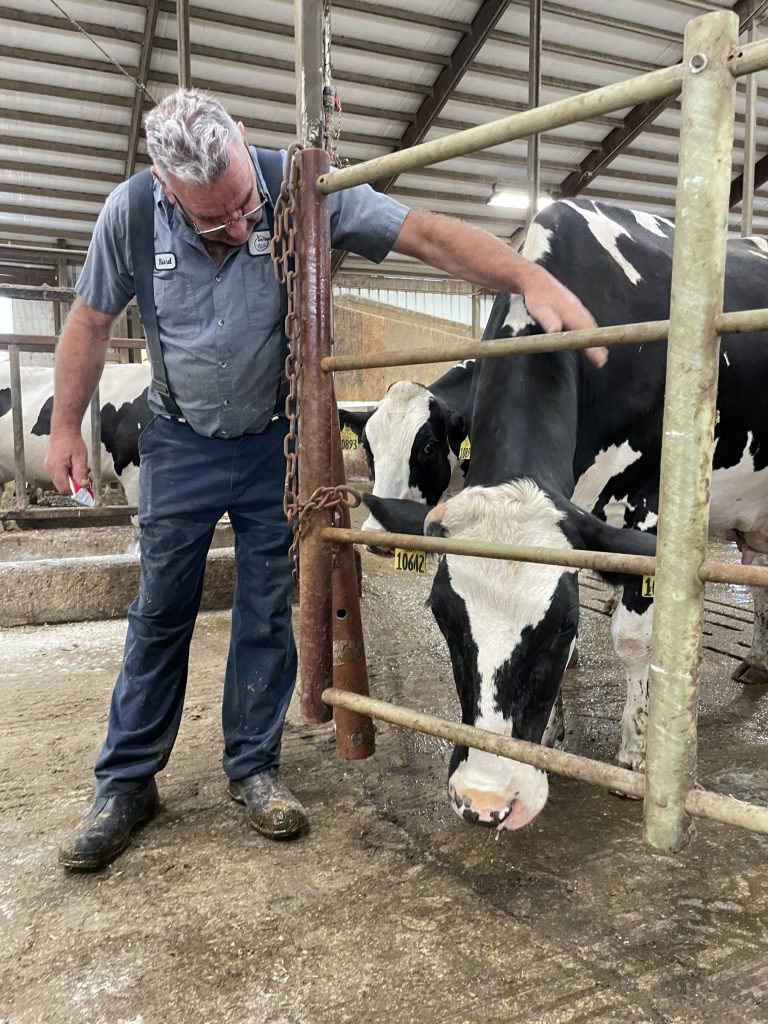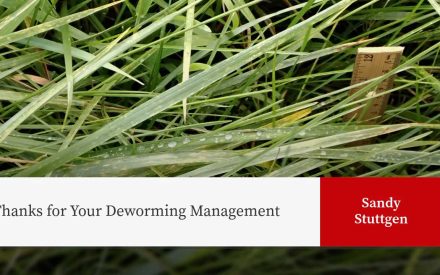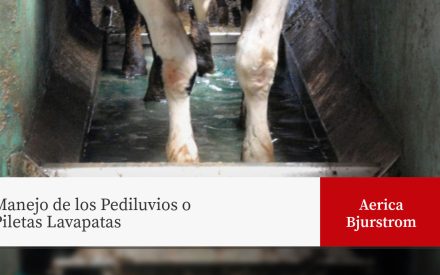Fresh cows are the most important, and most vulnerable, group of cows in the barn.
The first few weeks post-calving is the highest risk period for several diseases. Most infections, diseases, and/or metabolic disorders, such as milk fever, ketosis, retained placentas, metritis, mastitis, and displaced abomasums, or DAs, occur during this time. These illnesses can play a negative role in the cow’s future, either through the economics of milk production or animal well-being.
The strategy is to minimize losses associated with disease by preventing its occurrence. And to do this, managers must follow a consistent approach to daily observations of the fresh cow to alert them of existing problems and to address them quickly. Knowing what is normal is key to being able to identify and assess what is not. Abnormalities and small changes are more easily caught with a consistent pattern, versus a random order of examination points.
When observing cows, do not just look, observe. Close observation of the fresh cow should occur daily for 10 to 14 days after calving. Identify the “off” cow by recognizing a “normal” cow for your herd based on her general appearance, attitude, and condition.

Observation from the front of the cow
Healthy animals are alert, responsive, and aware of their surroundings. Sick animals tend to have their heads down, droopy ears, dull eyes, and are too tired to groom their noses. Cows that are depressed or not feeling well will not be responsive and react slowly to stimuli.
Eyes: Eyes should be clear, bright, and alert. Normally, the eye should be right up against the bottom eyelid. Sunken eyes are a potential indication of dehydration while redness or eye discharge can be an indication of respiratory disease. The more sunken the eyes, the more severe the dehydration. Cows are mildly dehydrated if there is a slight eyeball recession. If eyes are sunken, they are moderately dehydrated, and cows are considered severely dehydrated when eyes are severely sunken into the orbit.
Ears: A cow’s ears are somewhat like a barometer for many reasons. Ears should be moving and showing curiosity. Observe the carriage of the ears and feel them. Sick animals have droopy ears. This could indicate that she is depressed, in pain, or has a fever. When the ears are warm, the cow is usually feeling well, when hot there might be a fever, when cold, she is not feeling well or may have an incidence of milk fever, low blood calcium levels, or at least poor circulation to the extremities.
Nose: Observe for nasal discharge or other foul order for sinus infections. Abnormal discharge that is white, green, yellow, or bloody may indicate pneumonia or acidosis. When sick cows don’t clean their noses, they will have feed particles and nasal discharge sticking to their muzzle. It is also important to check if the nostrils appear dry, as this may indicate fever. Observe for a sweet, acetone smell from the breath, an indication of ketosis.
Mouth: Observe the cow’s appetite and if not eating or chewing her cud she should be flagged and examined more closely. Cows should always breathe through their mouths unless it is extremely hot where open-mouthed breathing helps them cool off.
Observation from behind the cow
Manure consistency: Observe the manure for its consistency, appearance, and odor. Check the ground directly behind the cow, her vulva, and her tail for abnormal manure. If the manure is too loose to form a pile, appears almost black, or is foul-smelling, this may indicate the presence of disease or a rumen that is not working well.
Vulva discharge: Observe for any discharge from the vulva. It is normal to find vaginal discharge up to 2 weeks after calving. However, dark red and foul-smelling vaginal discharge is not normal and is symptomatic of uterine infection or retained placenta. Any visible placenta after 12 hours is considered a “retained placenta” and should be promptly addressed.
Udder: Observe and palpate the cow’s udder for abnormalities such as swelling or asymmetry as an indication of mastitis. Excessive udder swelling strongly suggests the need for revision of the dry cow feed program and perhaps cows are not getting enough exercise. Udder fill and milk yield are also an indication of how well the cow has been eating. An udder that is not full is typically a sign of a metabolic issue or illness. Excessive or lingering edema should also be recorded.
Observation from the side of the cow
Heart rate: A normal heart rate is 60 to 70 beats per minute and a respiration rate is 30 breaths per minute. Higher heart or respiratory rates can be an indication of heat stress, fever, or pneumonia.
Rumen fill: Observe the side of the cow for rumen fill and observe whether the cows are spending time ruminating. If the cow appears not to have enough rumen fill, she has not consumed enough feed and may be experiencing an illness. An example of rumen fill is observing an upside-down triangle right before the hip. An empty rumen will be sunken (depressed). A cow with a distended rumen will typically appear on the left side of the animal.
Rumination: Farms with rumination collars should monitor rumination minutes. Fresh cows should have a minimum of 450 rumination minutes per day at 5 to 7 days post-calving.
If you see a fresh cow that is struggling to adapt, you may see her standing apart, with her tail head raised due to the pain of calving, and with an empty rumen. If you act early, it can make a difference to that animal before she gets sick.
Observation of records
Milk weights: A drop in milk production between given days is an indication the cow may be off-feed and dealing with an infectious disease or a metabolic disorder. Compare the day-to-day milk production of the cow, as well as compare her production to her pen mates. Fresh cows should increase milk production by 0.5 to 1 pound per day after calving.
Develop a record system to record observations for each cow in the fresh pen or communication strategy to the lead herdsman on employee observations. Fresh cows are at risk for various metabolic issues, but through careful management and by providing optimal nutrition, they can get off to a great start in their lactation.
Conclusion
A fresh cow or transition cow will be in a vulnerable state up to 30 days post-calving. Managing these cows correctly in this critical time of her lactation improves her health and well-being, and also improves her performance. Getting the cow off to a good start sets her up for a successful lactation, and sets her up for healthy lactations in the future.

 ▶️ Watch: Generalidades de la podología bovina especializada
▶️ Watch: Generalidades de la podología bovina especializada Understanding Liver Flukes in Wisconsin cattle: Lifecycle, Risks, and Control Strategies
Understanding Liver Flukes in Wisconsin cattle: Lifecycle, Risks, and Control Strategies Thanks for Your Deworming Management
Thanks for Your Deworming Management Manejo de los Pediluvios o Piletas Lavapatas
Manejo de los Pediluvios o Piletas Lavapatas


